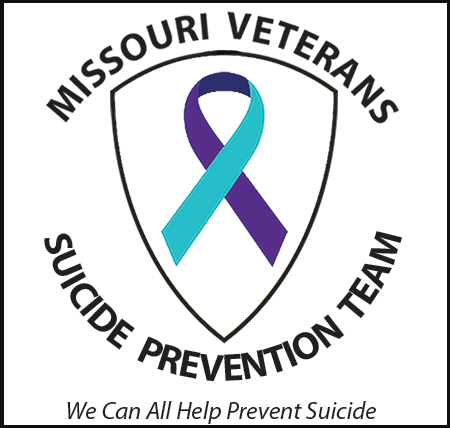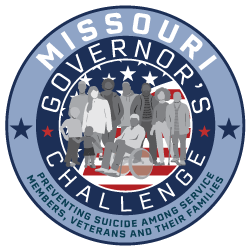SUICIDE PREVENTION TRAINING (in-person)
The more people trained to recognize the early signs of suicide and how to connect someone to care, the greater our chances to save lives. Completing suicide prevention training will not only give you these skills but also increase your knowledge about suicide, helping to tear down the stigma surrounding suicide.
Here are three in-person training options you can attend at no cost.

Missouri Veterans Suicide Prevention Team (MOVSPT)
We are a network of volunteer Veterans and military-connected people that provide NO COST, in-person suicide prevention training. Our trainers are certified in Question, Persuade, Refer (QPR) Gatekeeper training, a nationally recognized course. QPR is a one-hour course where participants learn to:
- recognize the warning signs of suicide
- provide hope for the individual in crisis
- connect the person to immediate help

U.S. Department of Veterans Affairs' S.A.V.E. Training
VA S.A.V.E. training is a free course that will help you act with care and compassion if you come across a Veteran who is in crisis or having thoughts of suicide. The acronym S.A.V.E. helps you remember the important steps involved in suicide prevention:
S Know the Signs that indicate a Veteran might be thinking about suicide
A Ask the most important question of all — “Are you thinking of killing yourself?”
V Validate the Veteran’s experience
E Encourage treatment and Expedite getting help
To contact your local VA suicide prevention coordinator to schedule in-person training, follow these steps:
1) Go to www.veteranscrisisline.net/find-resources/local-resources/
2) Enter you zip code and click “Search”
3) Select “Suicide Prevention Coordinators” and click “Search”, this will give you the contact information for the Suicide Prevention Team. You can request training through their office.
The S.A.V.E. training is also available online, self-paced, through our website
What Can I Do – Missouri’s Governors Challenge Portal
Conversations for Suicide Safer Homes
Most people attempt suicide in the U.S. by overdosing on medications but more people die when they attempt suicide with a firearm. Reducing access to lethal means such as firearms and medications can determine whether a person at risk for suicide lives or dies.
Conversations for Suicide Safer Homes focuses on how to create suicide safer environments when someone is experiencing thoughts of suicide. Participants will learn the following:
- Identify risk factors & warning signs for suicide
- How to ask directly about suicide when warning signs are observed
- Explain why putting time and distance between a person at risk for suicide and lethal means creates a suicide safer homes
- Identify off-site and in-home safer storage options for firearms and dangerous medications while someone is in crisis





